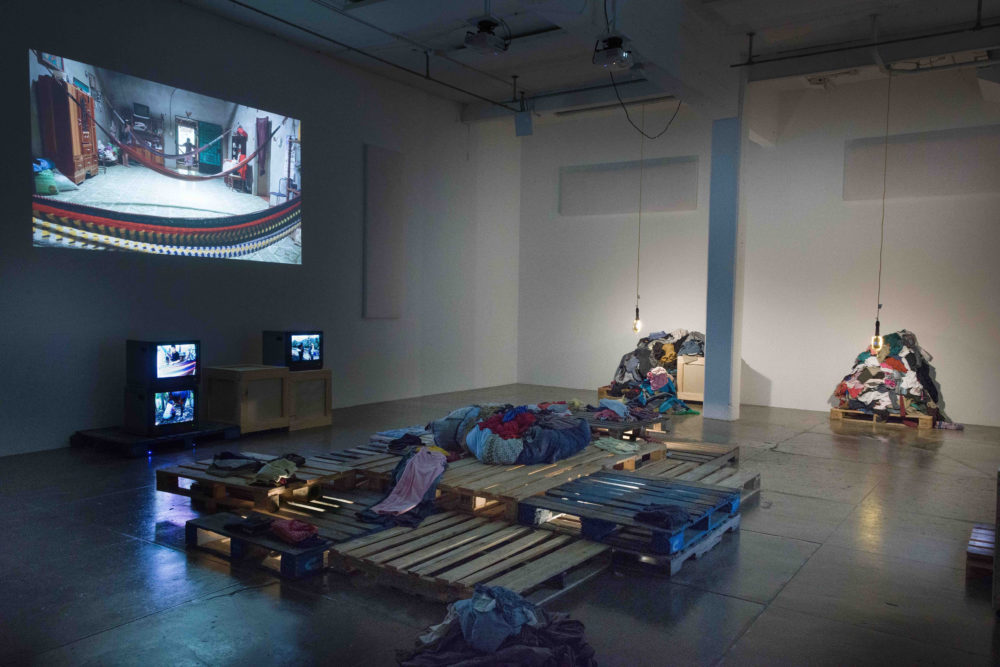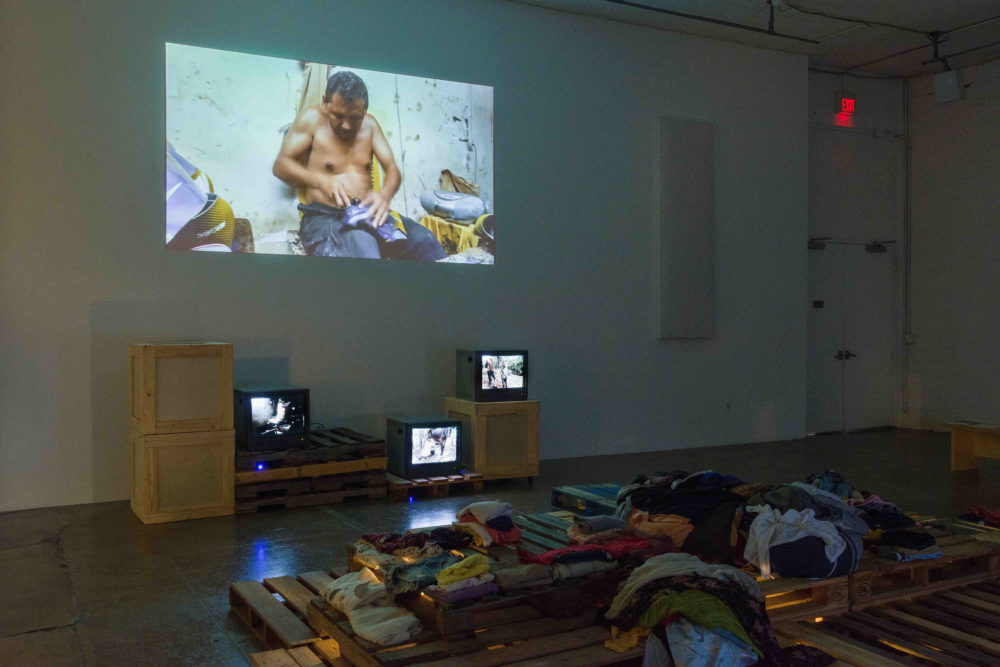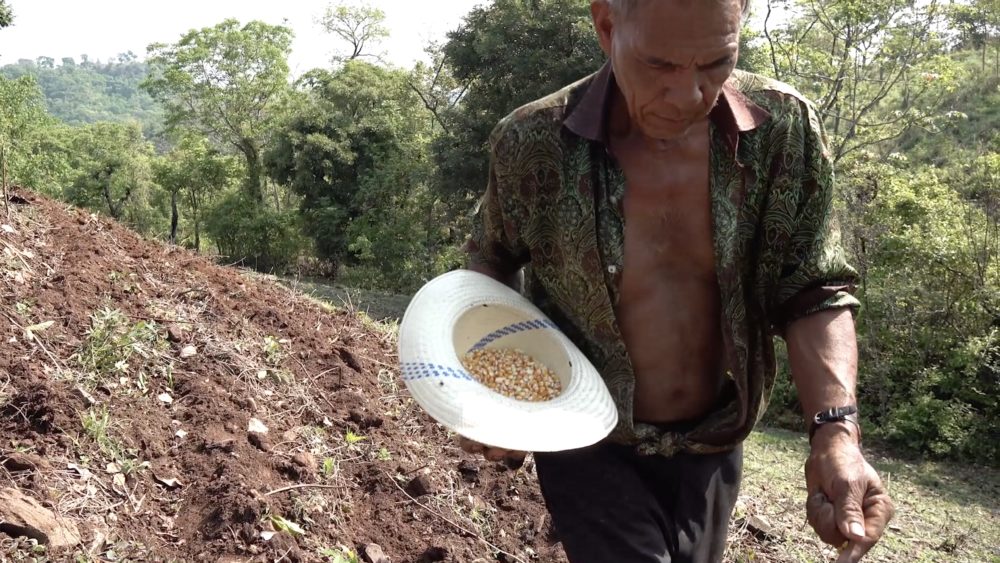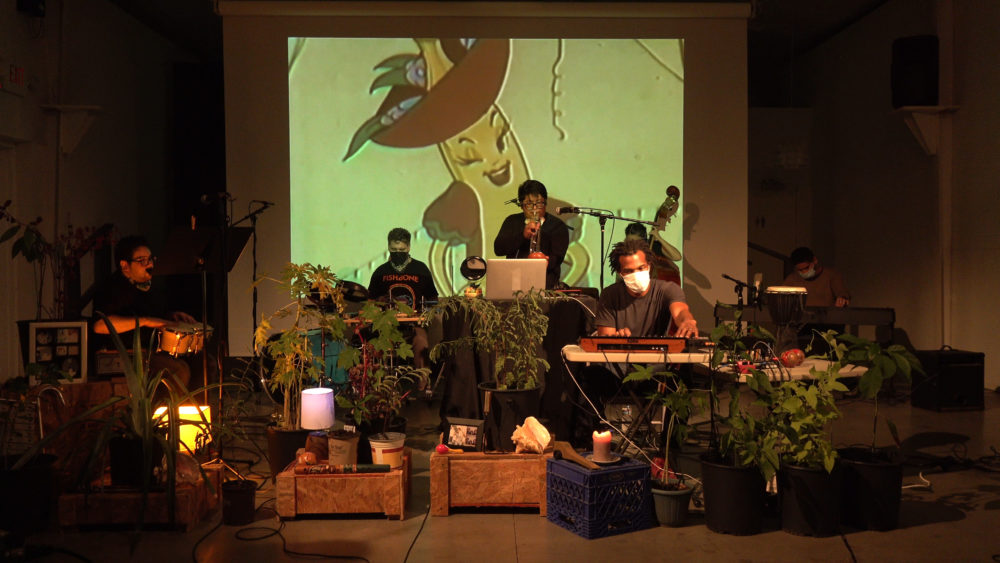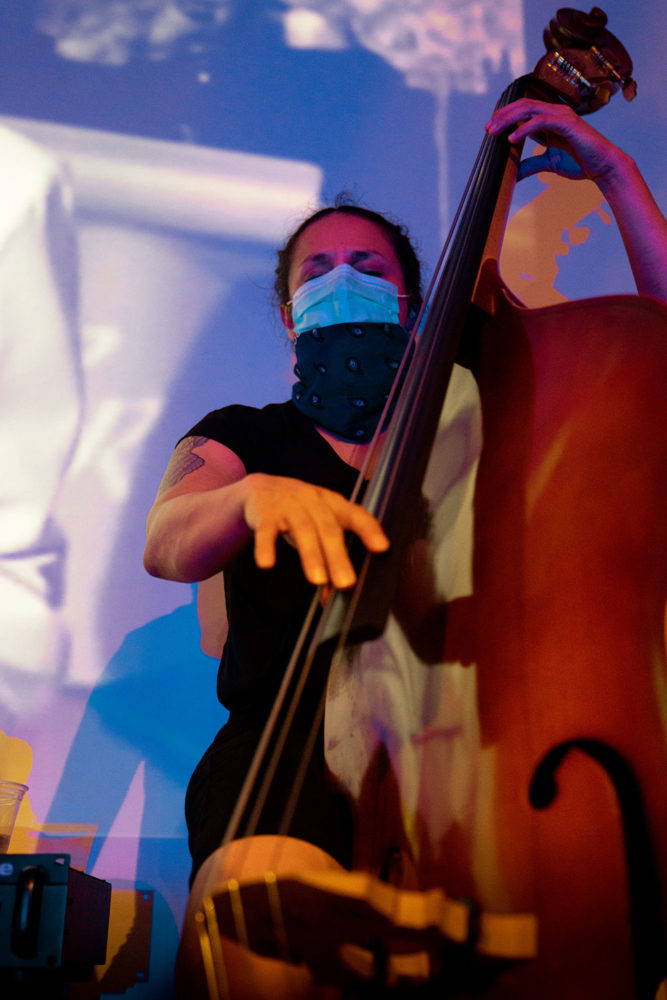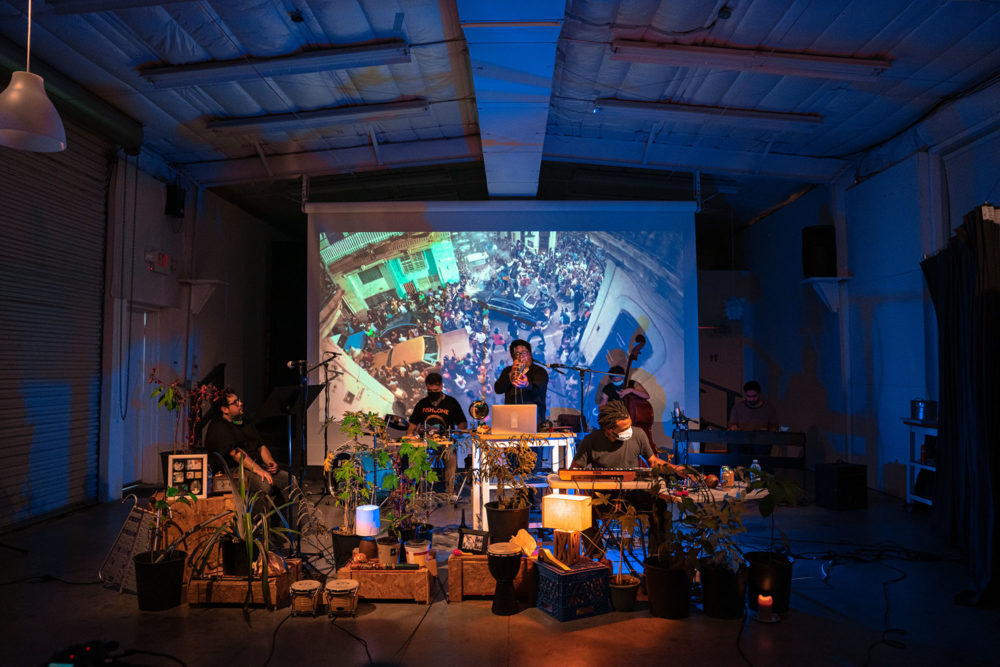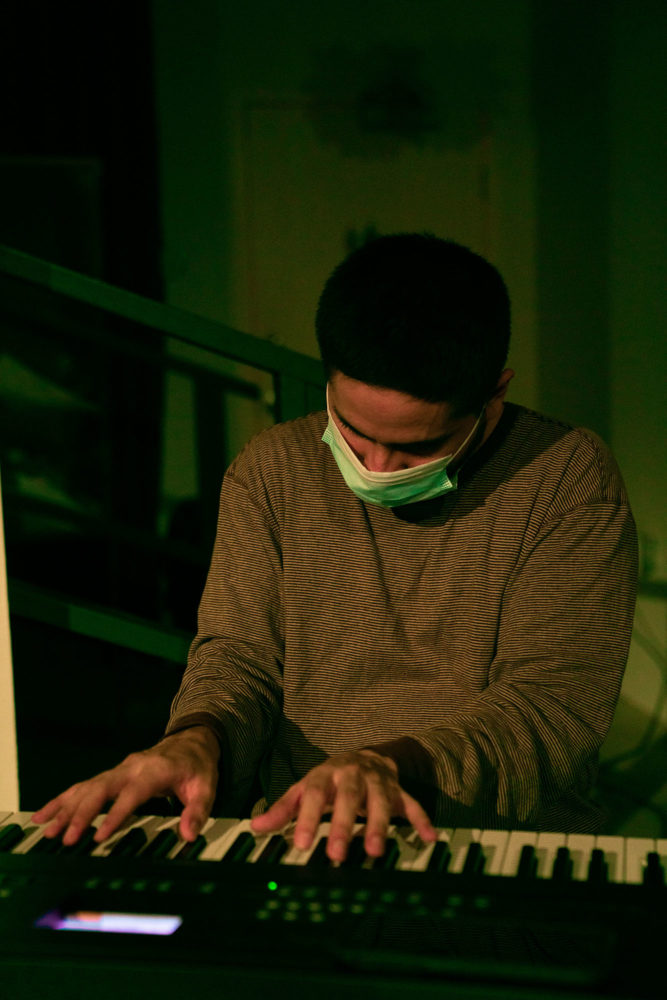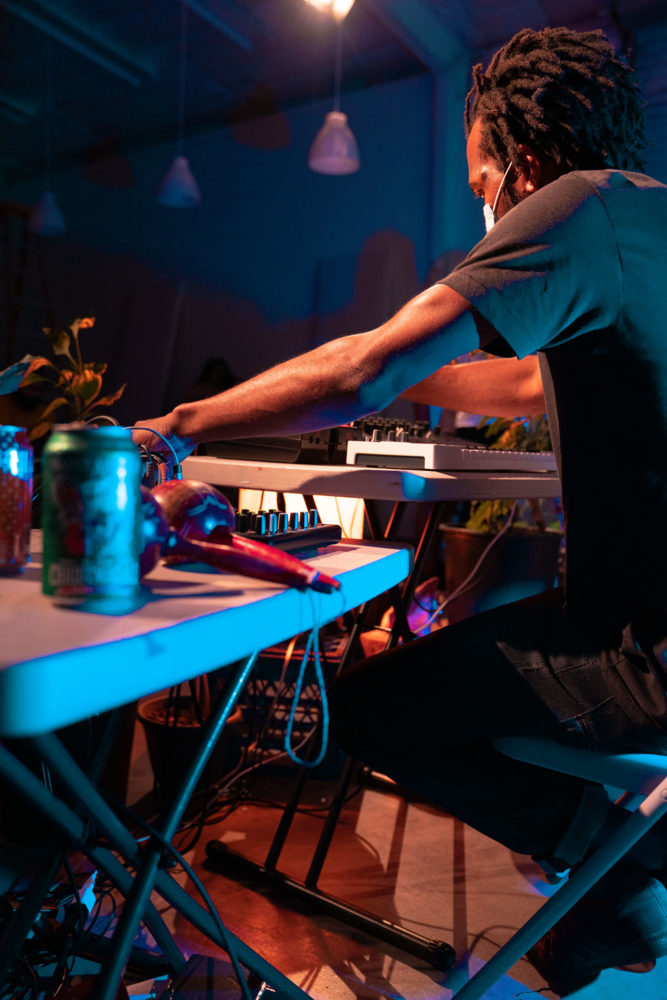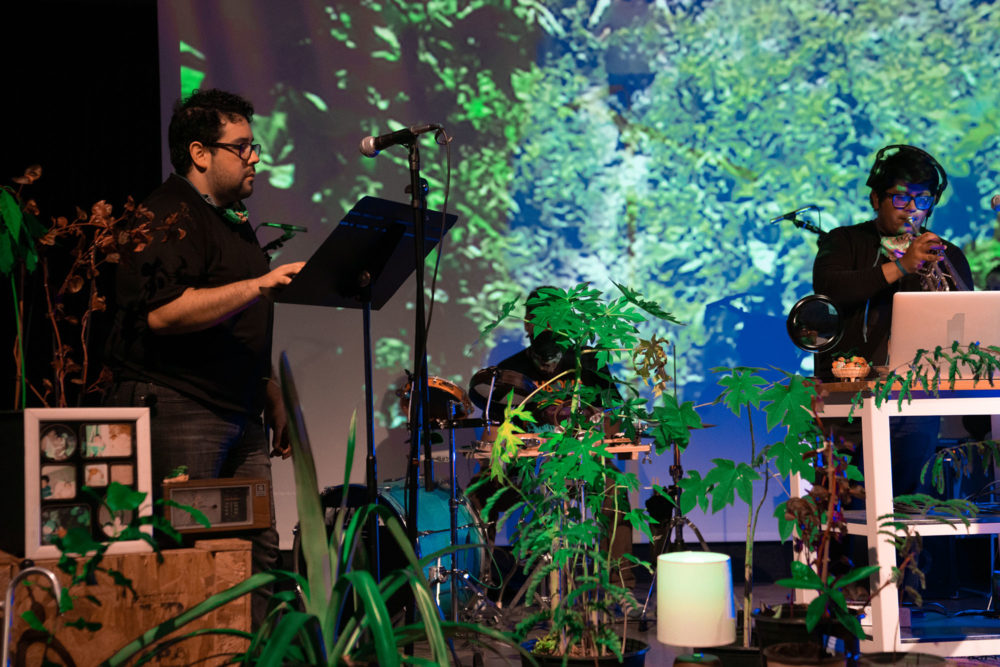A: Can you talk a little about your most recent body of work? You recently had a solo exhibition at the Galveston Arts center and Artspace In San Antonio, “rhythm and (p)leisure,” Could you talk about the development of this show and how it came about?
FA: rhythm and (p)leisure is another work that spent lots of time on the back burner and took several years to make. Similar to my previous proposal, it was rejected a number of times until it appeared in front of the right person. During that time, the ideas behind the work continued to develop and become more and more refined through the process of writing. Then, a few months after being awarded an Artadia award, I was selected by Karina Aguilera Skvirsky to realize my proposal for the Artpace Residency program in San Antonio the following year.
With the funding from Artadia I was able to purchase a computer and higher quality recording devices. It also afforded me the time to take three weeks off from work to go film in Central America before starting the residency. The work took a village to create and thanks to Artadia and Artpace, for the first time I had a budget to produce new work and I was able to compensate all those involved. An act that was very empowering as I was able to redirect funds to these various communities for their labor and contributions to the work.
The project was more ambitious in terms of scale and duration; it’s an 8-channel video installation that’s a little over 36-minutes long. A sort of meta-narrative with no dialogue but instead a visual and aural tour of working-class labor that speeds up as you transition from the countryside to the city. I was thinking a lot about productivity and value; how the meaning of those terms change depending on whose body is performing what. I question what bodies are afforded leisure and what bodies are not. How do we re-claim ownership of our own bodies, our labor, and the fruit of our labor? I believe the videos in the work reveal this by re-framing the way we look at Central American communities and combating negative depictions portrayed by mainstream media.
A: You often work within a range of media, from video installation to performance and text, incorporating music and storytelling, what role does materiality or media play into your overall narrative and ultimately your artistic practice?
FA: I grew up playing music all throughout middle and high school and never took a formal art class until I got to college. I was curious about photography and the darkroom process so I took a class and got hooked. Eventually I transferred into an art school and that is when I was introduced to painting and sculpture which opened up a whole new world for me. This is where I began working with clothes because I realized a photographic representation (or even a painting) could only go so far for what I was interested in. By senior year I had accumulated way too many artworks and because I was financially unstable, I had been moving around a lot. I decided to stop making stuff and instead turned back to the camera, except this time it was the video camera. I was initially intimidated by it and the editing software, in fact I didn’t even own a computer at the time. But I pushed myself and I learned by poking around in Final Cut. I ended up making my first film which was a short documentary about my family’s housing situation. It worked out unexpectedly because through other mediums I wouldn’t have been able to talk about homelessness in the same way. That’s when I realized that through video I am able to bring together all of my interests: image, sound/music, time/duration, and storytelling.
When I went on to grad school, I continued to work with video because it didn’t cost anything and it could be stored in a hard drive. I still didn’t have anywhere to store new physical works so I just avoided making any and instead began exploring writing, sound, and performance. Initially I was thinking of them separately but eventually they began to overlap with one another; however, to combine them with video has proven to be a challenge. It wasn’t until completing my most recent collaborative work, Navigating the Archives Within, that I’m finally able to see my own progression.
For the project Navigating the Archives Within I created a film tracking the evolving (mis)representation of Latinx communities in mainstream film and media, from the inception of Hollywood up to the present. The film was then scored with a live improvisation including my reading of prose creating again that dissonance between image and sound. The nature of how the work (and most of my work) doesn’t fit neatly into any category, reflects the way that my own identity also doesn’t fit neatly into any one category.
Having gained stability in the past couple years, I have begun re-introducing physical components to my most recent works. The clothes are back again and I continue to incorporate wooden pallets. To me both of these function as symbols of global trade but I’m also interested in their corporeal properties and their associations to class and the division of labor. More specifically, their circulation interests me in the way they mirror the circulation of people/communities offering up their bodies/labor, and by extension the circulation of culture and how it is consumed, appropriated, repackaged, and resold. A concept that brings me back to the use of video in my work as my primary medium. Growing up in South Central Los Angeles in proximity to Hollywood and seeing the (mis)representation of Black and brown communities had a major effect on me. Taking on the role of artist, filmmaker, author, or storyteller enables me to counter these negative depictions and the commodification of our bodies and our cultures. By using and combining a variety of media I am able to create multiple points of access/entry and speak to the layers and complexities around migration, place, and identity, and how they intersect. I don’t want to simplify these ideas but rather unpack them, and using time-based multimedia work allows for this.
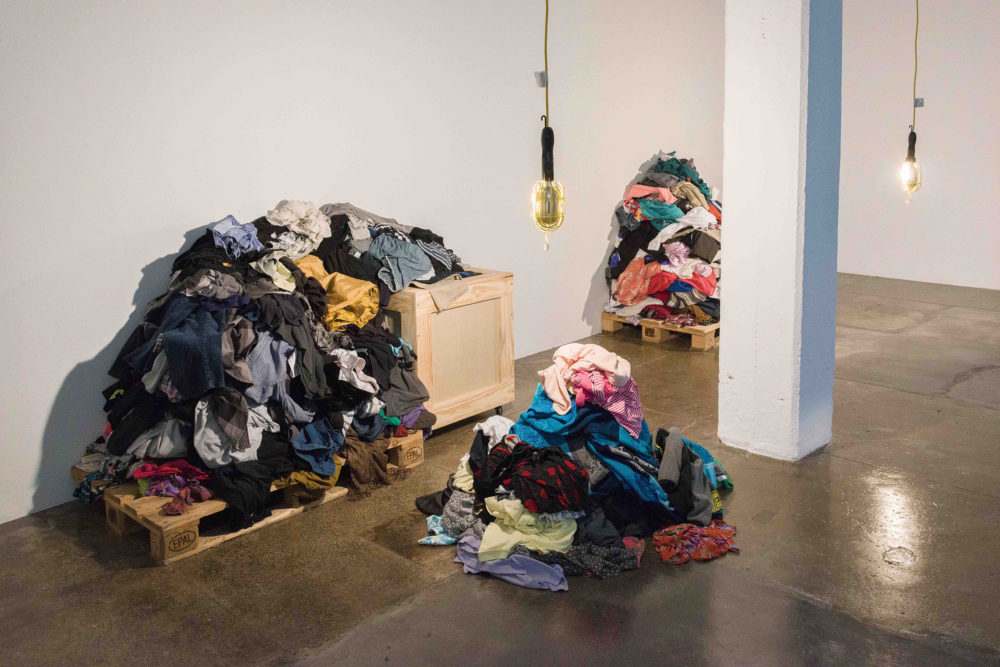
Francis Almendárez. Installation view of rhythm & (p)leisure, 2014/2019, 36:33 TRT, 8-channel video installation: HD projectors, media players, CRT monitors, sound mixer, stereo sound, wooden pallets, wooden crates, discarded clothes, portable work lights, performance; installation dimensions variable. Originally commissioned and produced by Artpace, San Antonio. Photo by Seale Photography Studios.
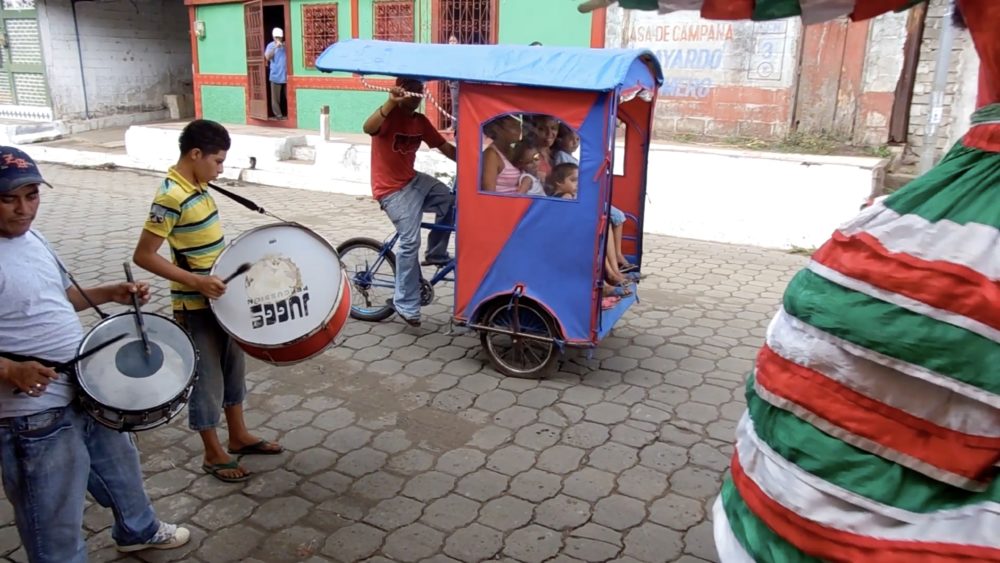
Video still from rhythm & (p)leisure, 2014/2019. Courtesy of the Artist.

Anthony Almendárez on trumpet and electronics. Production still from Navigating the Archives Within, 2020. Photo by Laura De León.
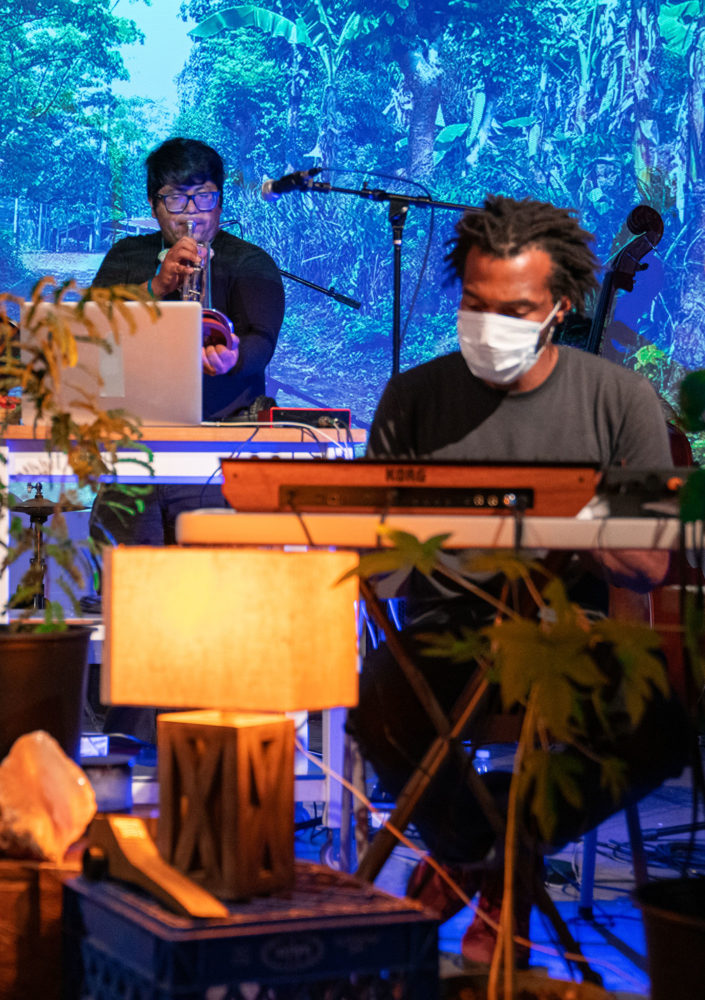
Xavier and Anthony. Production still from Navigating the Archives Within, 2020. Photo by Laura De León.

Video still from Navigating the Archives Within, 2020. Courtesy of the Artist.

Video still from Navigating the Archives Within, 2020. Courtesy of the Artist.

